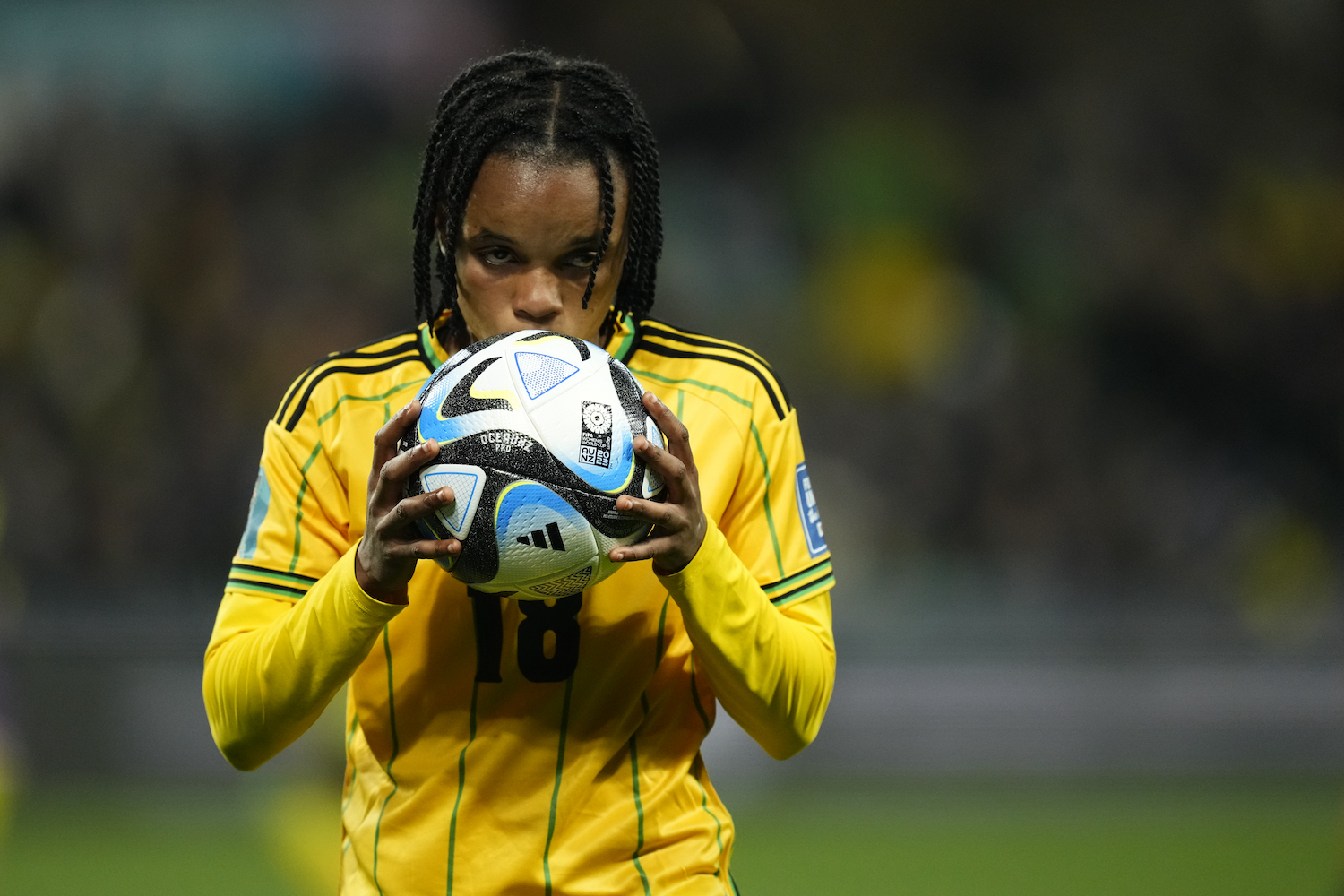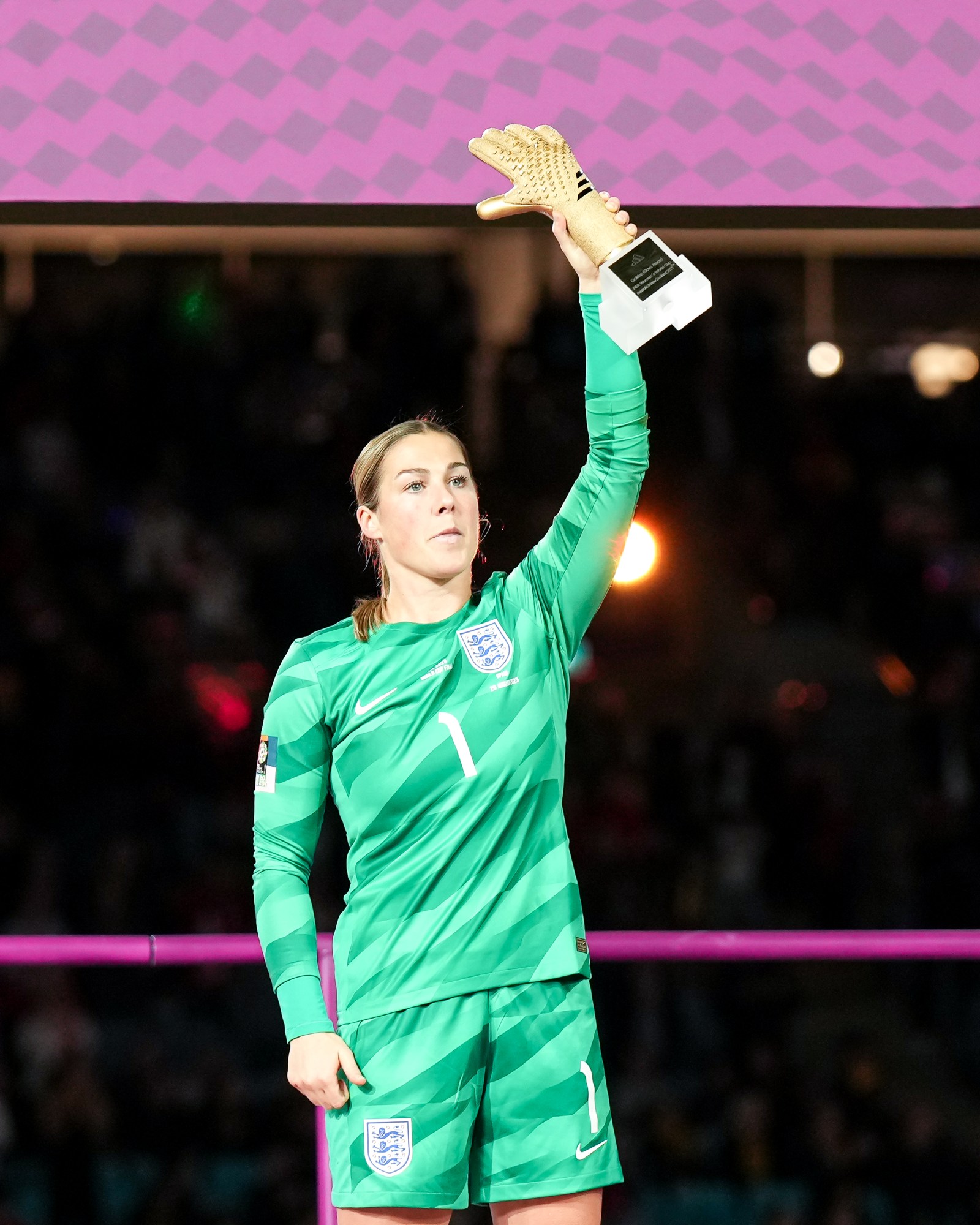As the hype around the success of the recent FIFA Women’s Football World Cup, held across Australia and New Zealand in August, simmers down, the little-known legacy between fashion and women’s football only continues to gain momentum—and for good reason. From the runaway success of the Wales Bonner-designed Jamaican team’s kit to the British public’s victory in convincing Nike to release newly minted national treasure Mary Earps’ goalkeeper jersey, the World Cup emphasised that it’s a game of two halves. Fashion is on the front foot, with the power to style new female renderings of athleticism, beyond men’s hand-me-downs and clingy athleisure.

Fashion’s relationship with women’s football is as knotty as the latter’s participation in the sport. When women first took to the pitch in the late 1800s, suffragette trailblazer and president of the British Ladies’ Football Club, Lady Florence Dixie, championed the sport as a means to break free of oppressive Victorian dress codes. “There is no reason why football should not be played by women, and played well too, provided they dress rationally and relegate to limbo the straitjacket attire in which fashion delights to attire them,” she declared in 1895. But Dixie’s dream of a fashion-fighting female football league would never materialise: women were banned from playing on UK Football Association-approved pitches from 1921 till 1971.
As the sport gradually professionalised and internationalised in the 90s, fashion was booted around as the reason for its slow take-off. In January 2004, the eternally red-carded former FIFA president Sepp Blatter outrageously suggested that if women adopted a “more female aesthetic” by wearing “tighter shorts,” the sport’s popularity would increase. Hotpants would, thankfully, never make the line-up but only because up until 2019 — when Nike and Adidas debuted kits specifically designed for women — they had to make do playing in left-over uniforms from the men’s league. How could we rationally expect women’s football to thrive when they were dressed to play second-fiddle to their male counterparts? It was only this year that Nike introduced period-proof shorts, following feedback from The Lionesses, asking their shorts to be changed from white to blue in case of period leakage.

Though the world of fashion has long been watching women’s football from the sidelines (perhaps as far back as 1987 when Jean-Paul Gaultier sent a football-sleeved bomber jacket down the runway), it wasn’t until this World Cup that it finally took centerfield. Brands like Prada, who dressed China’s women’s team off-field, saw an untapped consumer sector; at the other end of the market, Kim Kardashian sent the vintage football shirt market into a flap after stepping out in L.A. donning a 1998 Roma team jersey. When Adidas enlisted Wales Bonner to design Jamaica’s Reggae Girlz’s kits (which was soft-launched during her AW23 show), football attire suddenly became this summer’s style trophy.
Despite TikTok trends like #blokecore (which essentially entails wearing a football jersey, jeans, and Adidas Sambas to look like a geezer lifted straight from a Camden pub circe 2003) threatening to forever entrench football in the male gaze, designers like Ambush’s Yoon Ahn have gallantly pushed for this current sartorial interest to empower, to unite women. Speaking of her latest collaboration with Nike, released on the eve of the World Cup, she explained that, for her, jerseys are “more than what you wear to represent a team. To me, it almost looks like armour for them, as they enter the battlefield, they put this on… I think women are fighting for a lot more than just football.”
Similarly, Martine Rose, who dressed the US women’s team pre-match in gender-free suiting designed in collaboration with Nike (which was then released as a sell-out capsule), has long co-opted football culture to make gentle nods to something more political, something more fringe in her designs. Her iconic reversible design for England’s 2021 Euros kit, entitled The Lost Lionesses, drew upon the tradition of football jerseys as a symbol of protest to focus present attention on continuing issues of gender inequality in the sport.
As the feverish public support for the release of a replica of England goalkeeper Mary Earps jersey so gloriously proves, the world is hungry for new female representations of athleticism beyond questionably tight-fitting activewear. Self-professed football fanatic Miuccia Prada once said “if I have done anything, it is to make the ugly appealing.” And, by deconstructing the generic appeal of football, fashion too can move the goalposts of women’s football’s ugly past by elaborating styles rooted in their talent, their sport, their fight. The challenge? To keep the ball rolling until the next Women’s World Cup.

